
Certified Spinning® Instructor & CPT
If you have ever taken an indoor cycling class, then you know how fun they can be. Apart from all the other benefits, many people turn to indoor cycling to lose weight; this high-intensity class torches up to 600 calories in a single workout, but do you burn more calories when seated or standing on a spin bike? Read on to find out.
Is It Better to Cycle Standing or Sitting on a Stationary Bike?
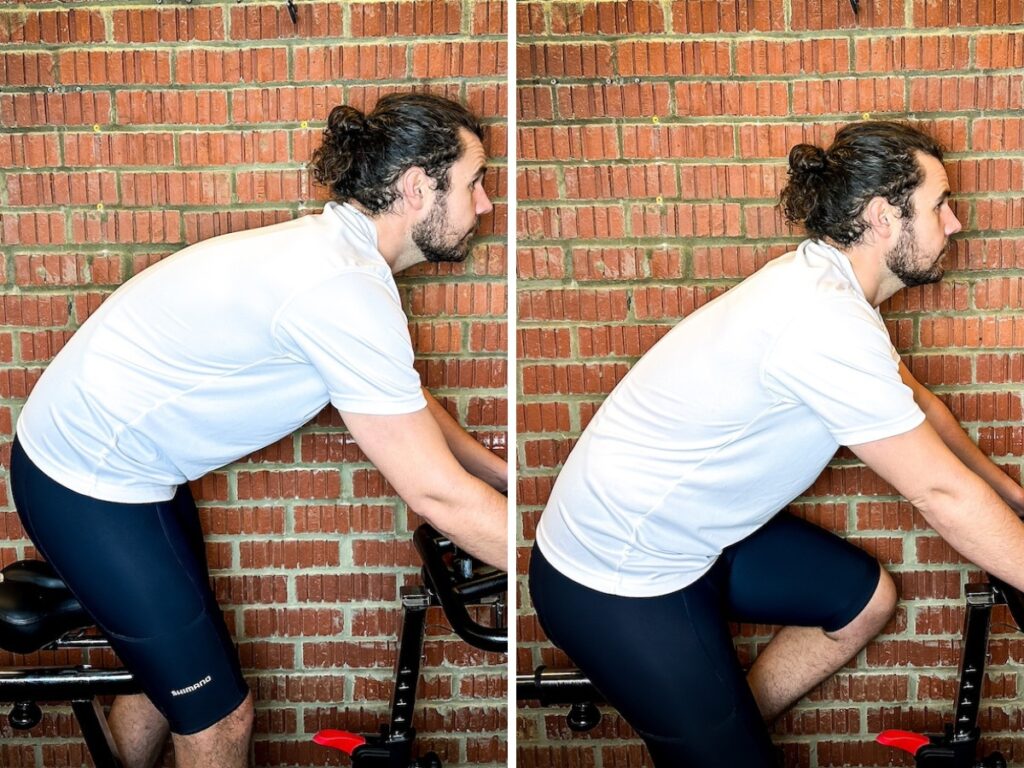
Before we get into whether it is better to sit or stand while riding, we first should talk about what type of exercise bike gives the option of cycling out of the saddle in a standing position. Only an indoor cycling bike is made for you to ride in or out of the saddle. Recumbent bikes and upright stationary bikes are designed for sitting only. Trying to stand while riding either of these two types of stationary bikes can result in injury and a very choppy pedal stroke. Not all indoor cycling bikes are equal, either. A commercial-grade indoor cycling bike is the clear winner as it allows versatility and a more robust riding experience.
Curious if sitting or standing on a spin bike is better? The answer really is both. As we will discuss later, one of these riding positions requires more muscle recruitment. But who honestly wants to ride in just one position for an entire workout when you can mix up your routine and have a little fun? Not me! Riding in and out of the saddle is fantastic as it can challenge your body differently.
Benefits of Cycling Standing Up Over Sitting
Cycling in any position will benefit your body, but if you are up for a challenge, you might want to ride out of the saddle on your next climb. Standing on your spin bike requires more core activation and upper body recruitment to maintain proper body alignment.
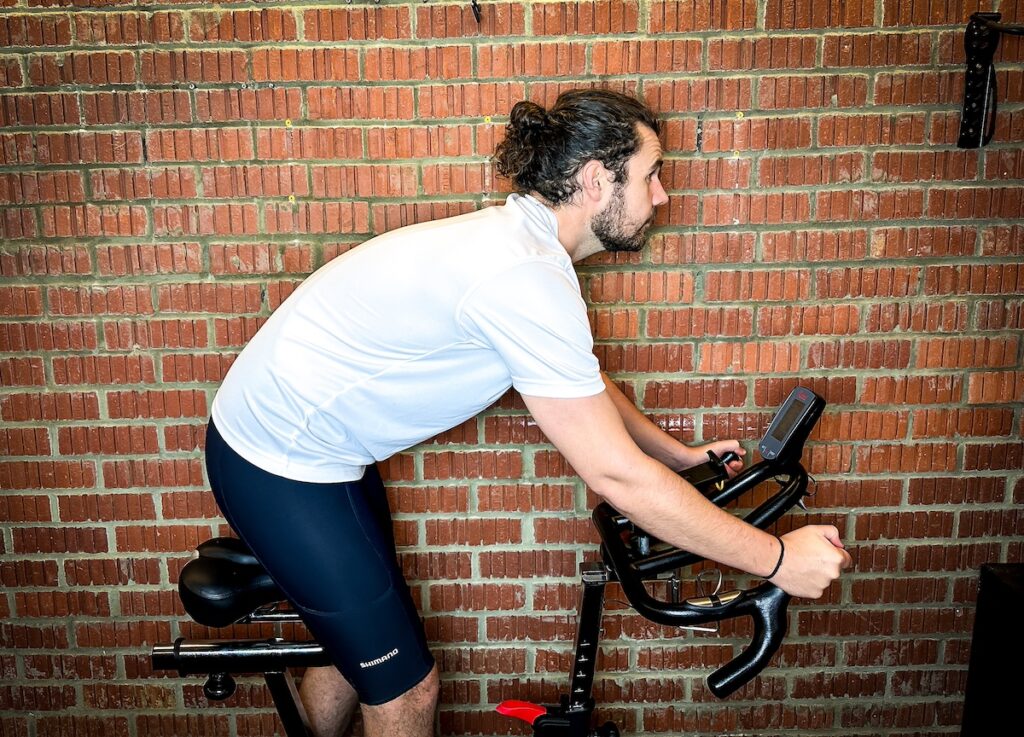
Muscles Used When Cycling Standing Up vs. Sitting
All the same muscle groups are used when cycling in a standing or sitting position to some degree. However, the amount of recruitment required in either position is quite different. So let’s break down these muscle groups.
Lower Body
Spinning is a total body workout. However, the lower body does the vast majority of the work. The lower body generates the power to push down and pull up during each pedal stroke. Quadriceps, hamstrings, glutes, calves, and shins create the power to fuel each pedal rotation.
Core & Stabilization
The core is vital in helping you stay upright when cycling in or out of the saddle as it assists with pedaling power. However, core activation heightens most when climbing out of the saddle. The abdominals and erector spinae muscles that make up the core are the stabilizer muscles used in cycling. These muscles are not the primary movers throughout the joint action but work to stabilize the movement through the range of motion.
Upper Body
You might not think that the upper body plays much of a role when spinning, but muscles such as the triceps, latissimus dorsi, and pecs are all activated on the bike. Just as the core muscles help with stabilization while indoor cycling, so do your arms, back, and chest. The upper body muscles that help to make the stabilization happen are the triceps, latissimus dorsi, and pecs.
Which Position Requires More Muscle Activation
| Muscles Activated | Standing | Seated |
|---|---|---|
| Quadriceps | ✔ | |
| Hamstrings | ✔ | |
| Glutes | ✔ | |
| Core | ✔ | |
| Stabilizing Muscles | ✔ | |
| Arms | ✔ | |
| Back | ✔ | |
| Chest | ✔ |
Does Cycling Standing Up Burn More Calories?
Standing while indoor cycling can potentially burn more calories than sitting when other factors are considered. However, the amount of calories someone burns during any activity depends on the number of muscles being activated, how much muscle mass that person has, and most importantly, the intensity level being exerted. For example, suppose you exert the same intensity level while climbing in a seated position as when you change to a standing climb. In that case, you will naturally burn more calories out of the saddle due to the increased muscle activation that helps to maintain this riding position.
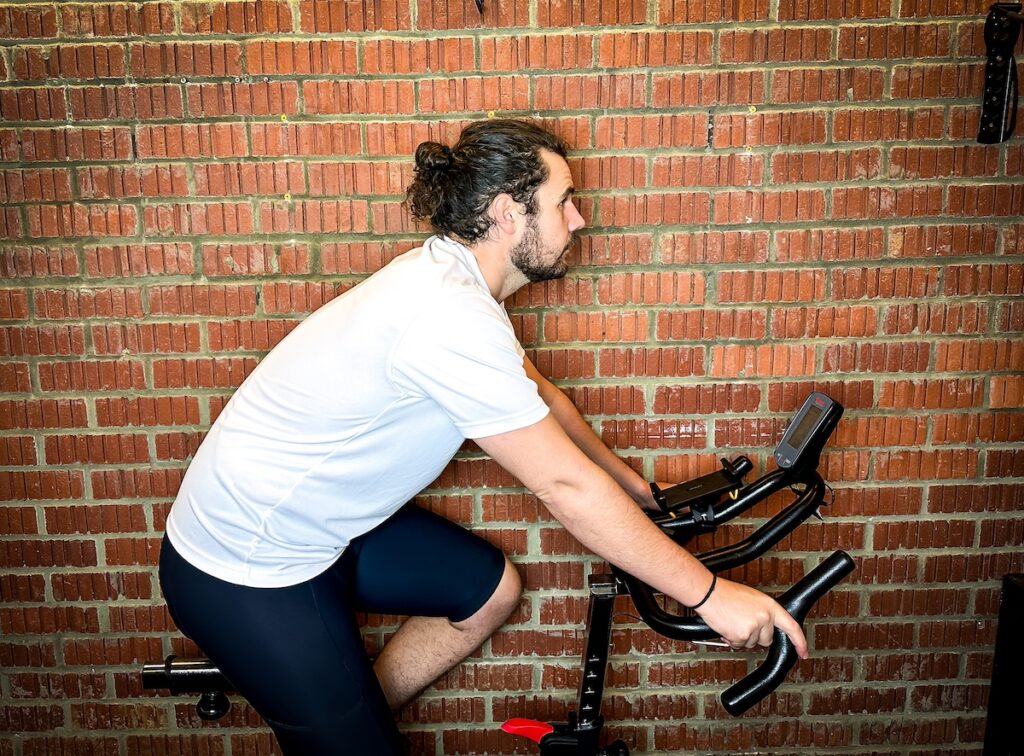
The Proper Position for Indoor Cycling
When your bike has the proper setup, it allows for better muscle recruitment, and the proper riding position comes naturally. Let’s break down how the bike should fit you. First, check how much bend you have in your knee while sitting on top of the cycle. You should have a slight knee bend at the bottom of the rotation.
Next, after pedaling to where your feet are parallel with the floor, we want you to check out the position of the knee in the front. Line this knee up with the ball of your foot as too far forward or back will increase knee pain. Handlebar height is a personal preference, but ensure that you can easily touch them in front of you while keeping your back straight. If you feel like you need to reach to touch the handlebars, you have a much higher chance of saddle soreness as it causes your shoulders to round and a different part of your anatomy to rest on your saddle. Instead, move your saddle one click forward and one click up to reach the handlebars easier while maintaining the proper knee position.
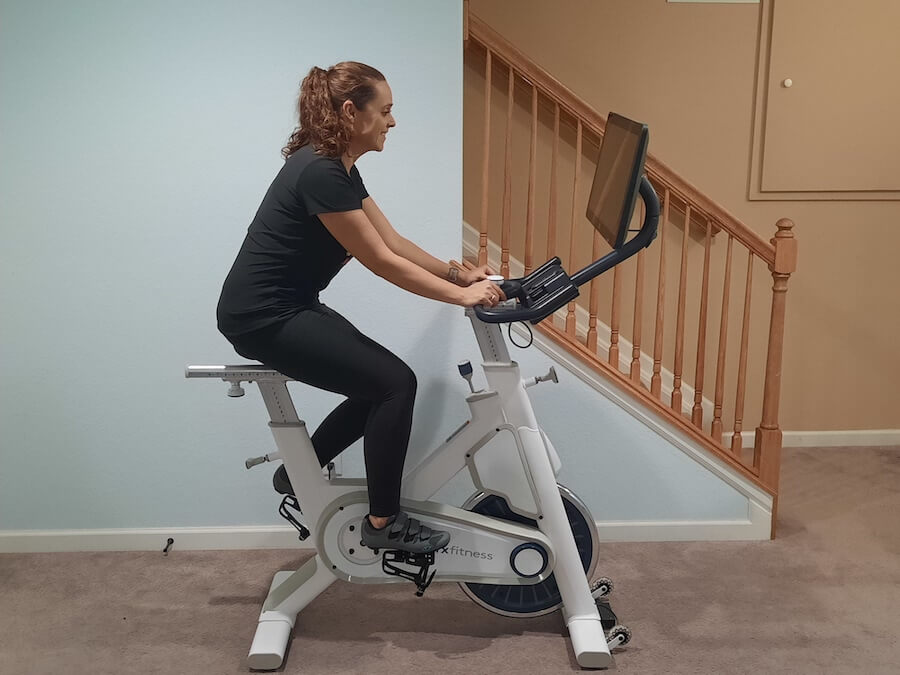
How to Position Your Feet When Cycling
To keep your feet in the correct position, focus on keeping the ball of your foot located on the pedal. Some indoor cycling bikes make finding the proper foot position easier than others with the help of toe straps, toe cages, and cleat accommodations. If you use toe straps or cages, ensure that your foot is gently secured on the pedal. If your foot can quickly move around, there is a higher probability of knee issues. Cleats automatically place your feet in the correct pedaling position and provide better output with each stroke.
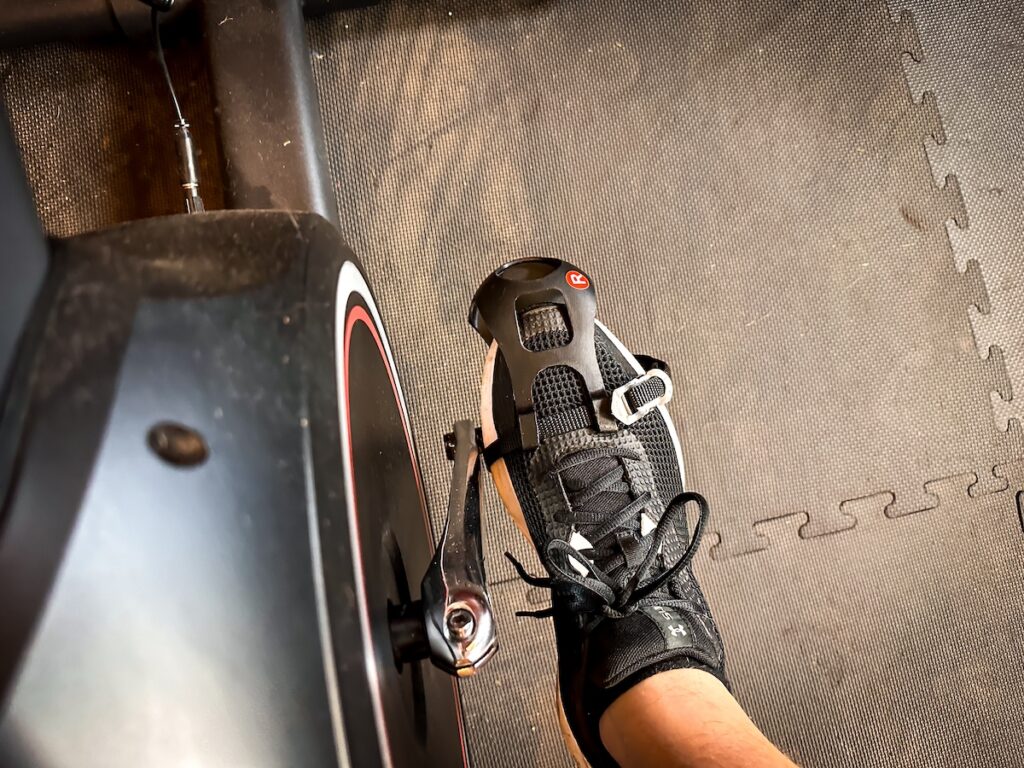
How to Properly Pedal Your Spin Bike
After securing your feet on the pedals, push through the ball of your foot during each pedal stroke. Your knees should remain in the same line as your feet and ankles. Some riders experience knee pain due to their knees riding to the outside of the stroke. Remember to keep your spine straight and drive your knees up on each pedal rotation. Naturally, our shoulders want to roll forward while spinning since many of us work at a desk, so remain mindful of opening your chest, moving your shoulders down and back away from your ears, and keeping your elbows bent.
Bottom Line
Indoor cycling is supposed to be fun, so instead of focusing on only one riding position, change your training stimulus by altering your cadence and resistance to vary your intensity. Most importantly, have fun and continue to challenge your body as you become faster and stronger.

If you do not care about how “good” you are at cycling, you have an indoor bike, and you just use cycling for low impact cardio and improved respiratory fitness, is there any disadvantage to biking out of the saddle like 70% of the ride? Sometimes I feel like it’s “cheating” and it feels easier, but my heart rate is consistently higher out of the saddle.
If you do not care about how “good” you are at cycling, you have an indoor bike, and you just use cycling for low impact cardio and improved respiratory fitness, is there any disadvantage to biking out of the saddle like 70% of the ride? Sometimes I feel like it’s “cheating” and it feels easier, but my heart rate is consistently higher out of the saddle.
I came across this article because I recently began working out and I’m in love (and in comfort I must confess) with the spinning bike, and I plan on using it as my main form of workout.
I absolutely loved the bottom line statement that one must have fun above anything else. And it makes so much sense, because working out is supposed to be a long-term habit. Thank you so much for this insight, as it has reminded of such an important idea in working out.
Thank you so much for your comment, Michael.
We couldn’t agree more! Fun is a core element of indoor cycling (and cycling in general), making it a fantastic type of workout. It isn’t easy to stay focused and work out if you don’t have a great time when doing it.
I came across this article because I recently began working out and I’m in love (and in comfort I must confess) with the spinning bike, and I plan on using it as my main form of workout.
I absolutely loved the bottom line statement that one must have fun above anything else. And it makes so much sense, because working out is supposed to be a long-term habit. Thank you so much for this insight, as it has reminded of such an important idea in working out.
Thank you so much for your comment, Michael.
We couldn’t agree more! Fun is a core element of indoor cycling (and cycling in general), making it a fantastic type of workout. It isn’t easy to stay focused and work out if you don’t have a great time when doing it.